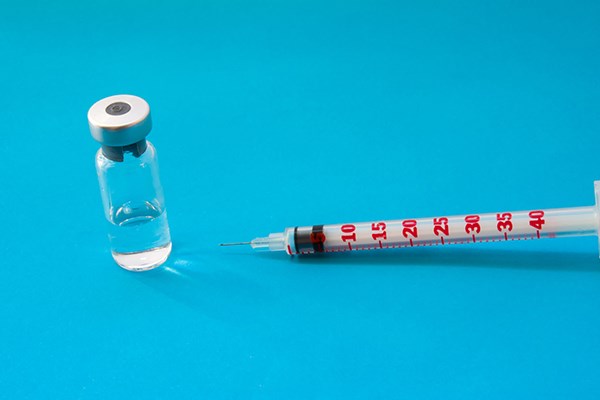ARTICLE
Perkins GD, Ji C, Deakin CD, et al. A Randomized Trial of Epinephrine in Out-of-Hospital Cardiac Arrest. N Engl J Med. 2018;379(8):711-721.
OBJECTIVE
To determine whether epinephrine is safe and effective for treatment of out-of-hospital cardiac arrest.
BACKGROUND
Epinephrine has been used for decades in cardiac arrest management; however, only high-quality CPR and early defibrillation have been shown to decrease mortality. The potential benefit of epinephrine is an increase in the aortic diastolic pressure allowing for an increase in coronary artery blood flow. Potential deleterious effects are an increase in beta-adrenergic stimulation. This causes an increase in dysrhythmias, increased myocardial oxygen demand, and increased risk of recurrent arrest. Epinephrine can further increase alpha stimulation, which increases platelet activation – prompting thrombosis. This can potentially lead to a decrease in microvascular blood flow to the brain, which can lead to increased cerebral ischemia. Prior observational studies have reported higher rates of ROSC with epinephrine but with poorer neurological outcomes. Thus, the PARAMEDIC2 trial was initiated.
STUDY DESIGN
1. Multi-centered, randomized, double-blind, placebo-controlled trial.
- Sites – 5 NHS ambulance services in the United Kingdom
- Time – December 2014-October 2017
2. Sponsor – Health Technology Assessment Programme of the National Institute for Health Research with legal sponsorship by the University of Warwick
3. Intervention – 1 mg of epinephrine or .9% saline given IV or IO every 3-5 minutes
4. Randomization – Randomized 1-1 by the Warwick Clinical Trials Unit with concealed assignment by opening of a trial pack containing either agent
5. Inclusion Criteria – Adult patients who had an out-of-hospital cardiac arrest in which ACLS was initiated
6. Exclusion Criteria
- Known or apparent pregnancy
- Age <16
- Cardiac arrest from anaphylaxis or asthma
- Epinephrine given before the arrival of the trial-trained paramedic team
- 1 ambulance service excluded traumatic cardiac arrests
7. Primary Outcome – Rate of survival at 30 days
8. Secondary Outcomes:
- Rate of survival to hospital admission
- Length of stay in the hospital and in the ICU
- Rate of survival at hospital discharge and at 3 months
- Neurological outcome at hospital discharge and at 3 months
- Favorable neurological outcome was defined as a Rankin scale of £ 3
KEY RESULTS
Primary Outcome
- Data for the primary outcome was available for 3995 patients who received the placebo and for 4012 who received epinephrine.
- 130 (3.2%) of patients survived in the epinephrine group at 30 days vs 94 (2.4%) of patients who survived in the placebo group at 30 days (P=0.02 with a CI of 1.06-1.82)
- NNT of 112
- Fragility Index of 6
Secondary Outcomes
- No significant difference of patients who survived to hospital discharge with a favorable neurological outcome. 2.2% vs 1.9% with a CI of .86-1.61.
- Severe neurological outcome (Ranking scale 4-5) was higher among the epinephrine group at 31% vs 17.8%
- Survival and neurological outcome at 3 months were similar among the two groups
- No significant difference amount length of stay in the ICU and the hospital
Strengths
- Did not use patient data from those most likely to survival (those who achieved ROSC in first round of CPR and defibrillation), so the study analyzed the sickest patients.
- Large, pragmatic, multi-centered, double-blinded, placebo-controlled trial
- Largest RCT to date on use of epi in OHCA.
- Patients were similar across the two groups.
Limitations
- Primary outcome was mortality, not neurologically intact survival.
- Hospital care was at the discretion of the treating teams.
- Not generalized to in-hospital cardiac arrest.
- Average time to epinephrine was 22 minutes into the arrest. At this point the patients may be past the point where epi can have beneficial effects.
- There might be better dosing for epinephrine than 1 mg.
- Did not collect data on patients baseline neurological status.
- The original protocol anticipated a higher survival rate than the one observed.
CONCLUSIONS
The use of epinephrine in out-of-hospital cardiac arrest leads to an increased rate of survival at 30 days compared to placebo, but there is no difference in favorable neurological outcomes. The authors further assessed patients’ preferences in outcomes. Patients may be less willing to accept invasive and prolonged treatments if the chance of recovery is minuscule and the risk of severe neurological impairment is high.
This study’s findings lead to the ethical consideration of whether utilizing epinephrine for OHCA will increase the pressure on the health care system in caring for post-cardiac arrest patients. Does the utilization of epinephrine for OHCA lead to large number of costly ICU admissions for a tiny percentage of favorable neurological outcomes? Does the benefit outweigh the harm on a macro scale?
ED TAKE-AWAY POINTS
ACLS calls for epinephrine after the first round of CPR. However, there is now strong data that it does not lead to improved neurological outcomes for patients in out of hospital arrest. This data is not generalizable to in hospital cardiac arrest. For those practitioners who feel comfortable working beyond ACLS this is a very important data point and might change their practice pattern in certain select patients.




